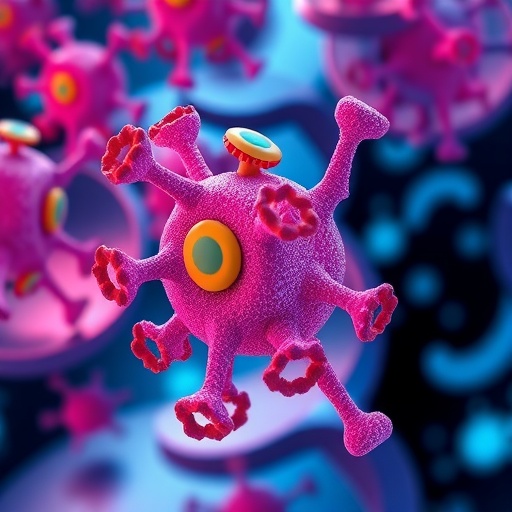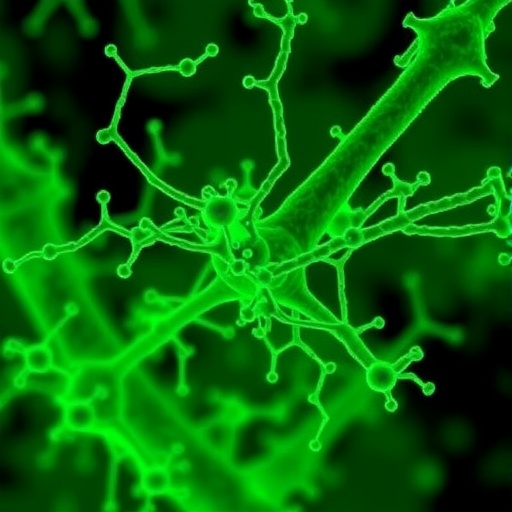In the realm of immune response and tissue repair, a groundbreaking study led by researchers Liao, Wang, and Jiang has illuminated the pivotal role neutrophils play in managing pathogen invasion and the subsequent maintenance of extracellular matrix (ECM) integrity. This research, published in the Military Medical Research journal, ventures into the often-overlooked mechanisms employed by neutrophils beyond their conventional function of direct pathogen phagocytosis. By understanding these complex interactions, we gain insight into innovative strategies for enhancing wound healing and combating infections.
Neutrophils are the first responders in the immune system, rapidly mobilizing to the site of infection or injury. Their primary function revolves around engulfing and destroying microbes. However, this study reveals a more nuanced role where neutrophils contribute to ECM repair, essentially acting like construction workers at the site of tissue damage. The researchers have postulated that neutrophils not only engage in immediate pathogen clearance but also initiate and orchestrate the repair processes necessary for restoring the structural frameworks that support tissue integrity.
The extracellular matrix, an intricate and dynamic network of proteins and carbohydrates, plays a vital role in providing structural and biochemical support to surrounding cells. It helps in maintaining tissue homeostasis and stability during immune responses. Pathogen invasion often compromises the ECM, prompting a cascade of inflammatory responses that need to be meticulously managed to promote healing. Neutrophils, through their multifaceted activities, have been observed to release a range of cytokines and growth factors that promote not just inflammation but also the recruitment of other cell types necessary for tissue repair.
In the study, the researchers meticulously examined the signaling pathways that neutrophils utilize to facilitate ECM repair. They identified that upon activation, neutrophils release matrix metalloproteinases (MMPs) that assist in remodeling the ECM during the repair phase. This process is crucial as it provides the necessary substrate for fibroblasts and other cells to migrate and proliferate, ultimately leading to effective tissue restoration.
Moreover, the research emphasizes the concept of neutrophils forming physical barriers to limit pathogen spread and protect the surrounding healthy tissues. This “wall-building” function is not merely a passive response but an active strategy by which neutrophils utilize their own cytoplasmic extensions to encase pathogens and prevent their dissemination. This phenomenon highlights the adaptive nature of neutrophils in responding to varying degrees of threat posed by pathogens.
Intriguingly, this study sheds light on the duality of neutrophil functions, where their pro-inflammatory actions can simultaneously contribute to ECM repair. While traditional views often focus on their role in the immediate response to infection, this research offers a more comprehensive understanding of their contributions to long-term healing and repair strategies. The implications of these findings suggest that therapies targeting neutrophil activation and function could potentially enhance wound healing.
In terms of practical applications, the insights gained from this research provide a tangible basis for the development of novel treatments aimed at enhancing tissue repair processes in military medicine. Combat injuries often result in complex wound healing scenarios where traditional interventions may fall short. By harnessing the innate abilities of neutrophils and manipulating their functional pathways, we can improve recovery times and outcomes for injured soldiers.
Looking to the future, the researchers aim to delve deeper into the biological mechanisms underpinning neutrophil interactions with various ECM components. Understanding how these immune cells communicate with other stromal cells is key to unraveling the complexities of tissue repair. By elucidating these pathways, it may become feasible to create targeted therapies that can enhance neutrophil efficacy while minimizing any unwanted inflammatory side effects.
Additionally, the potential for translating these findings into clinical practice cannot be understated. For conditions such as chronic wounds where neutrophil response may be dysregulated, enhancing their function as suggested by Liao et al. could offer a new avenue for treatment. Personalized medicine strategies could emerge by determining specific neutrophil activity profiles in patients, paving the way for tailored interventions.
This research underscores the necessity for an integrative approach towards understanding immune responses in tissue repair. While identifying the key players such as neutrophils is crucial, the interplay between these immune cells and their local environments must also be taken into account to develop innovative strategies for promoting effective healing.
Moreover, the study advances our scientific knowledge and opens equitable avenues for further research in the field of immunology, potentially leading to novel therapies for various conditions where immune response and tissue repair intersect. Combining knowledge of immunology with tissue engineering might lead to breakthroughs that not only enhance healing processes but also redefine how we approach treatment in areas affected by pathogens.
In conclusion, the findings presented by Liao, Wang, and Jiang signify a pivotal moment in our understanding of neutrophils and their role in wound healing. By viewing these cells through a broader lens, we begin to appreciate their essential contributions to both immediate and long-term responses against pathogens. This knowledge serves as a cornerstone for future research aimed at harnessing the power of our immune system to foster effective healing in both military and civilian contexts.
As research continues, the dialogue surrounding the multifaceted role of neutrophils will likely evolve, spurring further inquiries into optimizing tissue repair mechanisms. The journey of translating these discoveries from bench to bedside remains as critical as ever, ensuring that the insights gained can ultimately translate to improved clinical outcomes.
The study of neutrophils opens many doors, and as we continue to unravel their complex roles, new therapeutic interventions may emerge, promising enhanced healing pathways that could redefine medical treatment in the face of injury and infection.
Subject of Research: Neutrophils and their Role in Extracellular Matrix Repair
Article Title: Building “walls” to stop pathogens: neutrophils play a role in the repair of extracellular matrix
Article References:
Liao, FY., Wang, Z., Jiang, JX. et al. Building “walls” to stop pathogens: neutrophils play a role in the repair of extracellular matrix.
Military Med Res 12, 34 (2025). https://doi.org/10.1186/s40779-025-00624-0
Image Credits: AI Generated
DOI: https://doi.org/10.1186/s40779-025-00624-0
Keywords: Neutrophils, Extracellular Matrix, Immune Response, Tissue Repair, Matrix Metalloproteinases, Inflammation, Wound Healing, Military Medicine.
Tags: ECM integrity maintenanceextracellular matrix repair mechanismsgroundbreaking research on neutrophilsimmune system first respondersinnovative strategies for infection combatneutrophils and tissue integrityneutrophils in immune responsepathogen invasion managementphagocytosis beyond pathogensrole of neutrophils in ECMtissue repair and wound healingunderstanding immune interactions





